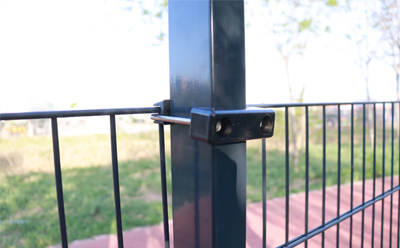Innovative Metal Mesh Solutions for Mice - Enhance Comfort and Safety
Set . 09, 2024 16:37
The Use of Metal Mesh in Housing for Mice Benefits and Considerations
When it comes to housing lab mice, the materials used in their enclosures play a crucial role in ensuring their health, well-being, and overall safety. One material that has garnered attention in recent years is metal mesh. Metal mesh offers several advantages over traditional materials such as plastic or glass, making it an appealing choice for researchers and animal care professionals. This article explores the benefits of using metal mesh for housing mice, along with some considerations that come with its implementation.
Advantages of Metal Mesh
1. Ventilation One of the primary benefits of using metal mesh is its ability to provide excellent ventilation. Proper airflow is essential in preventing respiratory issues among lab mice. Unlike solid enclosures that can trap heat and humidity, metal mesh allows for a free exchange of air, reducing the risk of stale air and promoting a more comfortable environment.
2. Durability Metal mesh is considerably more durable than plastic alternatives. Mice are known for their gnawing habits, and traditional plastic cages can easily become damaged or compromised. Metal mesh, on the other hand, is chew-resistant, extending the life of the enclosure and reducing the need for frequent replacements.
3. Visibility Another notable benefit of metal mesh is the visibility it provides. Metal grids allow for clear observation of the animals inside. This is especially important in research settings where monitoring behavior and health is crucial. Researchers can easily see the mice without disrupting their environment, which is beneficial for behavioral studies.
4. Ease of Cleaning Metal mesh cages are generally easier to clean and sanitize than their plastic counterparts. The non-porous nature of metal allows for effective sterilization without the risk of harboring pathogens in scratches or crevices. Moreover, the open design of mesh facilitates thorough cleaning and reduces the accumulation of waste.
Considerations for Metal Mesh Housing
metal mesh for mice

While the benefits of metal mesh are numerous, there are also some considerations that need to be taken into account before implementing it in housing for mice.
1. Potential for Injury One of the main concerns with metal mesh is the potential for injury. Sharp edges can be a hazard, particularly if a mouse becomes agitated or tries to escape. It is essential to ensure that the edges are rounded or coated to prevent any harm to the animals.
2. Temperature Regulation Metal can conduct heat and cold more effectively than other materials. In environments with extreme temperatures, metal mesh might require additional insulation or modification to ensure that mice are kept in a comfortable and safe temperature range.
3. Cost While metal mesh may save money in the long term due to its durability, the initial investment can be higher than that of plastic cages. Researchers and institutions must weigh the upfront costs against the potential long-term savings and benefits.
4. Aesthetics Depending on the setting, some may find metal mesh less visually appealing than traditional cages. This might be a consideration for facilities where the appearance of animal housing is important for visitors or public relations.
Conclusion
In conclusion, metal mesh presents a compelling option for housing lab mice, combining ventilation, durability, visibility, and ease of cleaning. However, researchers must carefully consider the potential drawbacks, including injury risks and cost implications. Ultimately, the choice of housing should prioritize the health and welfare of the animals while also meeting the needs of ongoing research or breeding programs.




















